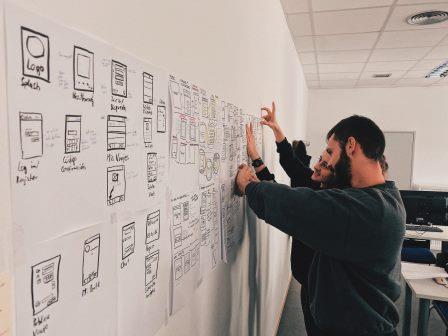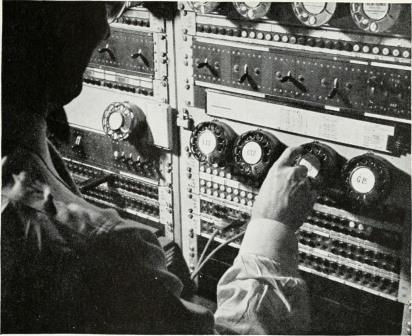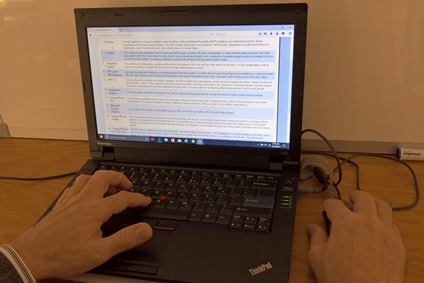CYCOGS ® Brand Cyber Physical Systems (CPS), Internet of Things (IoT) consulting
Cyber-Physical-Systems (CPS)

The CYCOGS ® Company has been involved in Cyber Physical Systems (CPS) and the Internet of Things (IoT) well before these terms were coined.
Several of A Cyber-Physical System (CPS) represents a complex component or sophisticated mechanism that implements computer-based algorithms for monitoring and control.
A Cyber-Physical-System (CPS) relies on Physical Hardware and Software systems that are completely integrated resulting in more than the sum of its parts. TheBy contrast, an Internet of Things IoT (IoT) system comprises a physical component of varying complexity, able to connect together and send and receive data.
TheCyber-Physical Systems (CPS) typically interact with its physical environment utilizing a mechanism and integrated with computing power to monitor and control its one or more sub components.
Cyber-Physical Systems (CPS) are sometimes called an Intelligent Mechanism, which uses several smaller interacting elements operating as a network, forming a system.The
Contact: Send questions and comments about this web site to the

The Internet of Things (IoT)
By contrast, an Internet of Things (IoT) System represents a physical component of varying complexity that is able to connect together and send and receive data using the Internet.
Some configurations of theCYCOGS ® staff feel IoT projects require experience, knowledge of the organizations needs and what processes are involved.
It is best to start with a prototype / pilot project in order to determine business planning and prepare for future scalability in order to
completely capture the IoT opportunity.
Besides known IoT issues like complexity, data mining, security issues, power use and privacy, remain an issue for IoT longevity.
IoT longevity or frequent lack of it will require budgeting additional time and resources as maintenance of the IoT devices, sensors and sensor calibration
(which naturally degrade over time)
and that results in ongoing operating costs. - Unexpected ongoing operational costs if this was neglected.
CYCOGS ® knowledgeable staff draws from an extensive background in sophisticated sensors, including maintenance and calibration.
Applying the wrong sensor will yield disappointing results and/or wasted money on over-capable sensors.
Your data is only as good as the sensor, its calibration and resulting sensor data.
We know sensors! Sensors ranging from an on/off switch (digital 1/0), including: Environmental: Temperature, Relative Humidity (RH), Moisture content, Wind Speed, Precipitation, Sun light levels, Barometric pressure, etc. Mechanical: Stress, Strain, Force, Weight, Displacement, Positional, Rotational, Velocity, Acceleration, Gravimetric, Distance, Pressure, Time, Temperature, RPM, Torque, Vibration, Acoustic, Sound, Sonar, flow rate, nuclear thickness, etc. Electrical: Sensing the electromagnetic spectrum from Radio wave, microwave, IR, visible, UV, X-Ray, to the Gamma Rays. This includes Voltage, Current, Power, Resistance, Capacitance, Magnetics, other electrical and electrostatic, etc., to visual color spectrums, temperature sensors, pressure sensors, vacuum sensors, optical sensors, physical sensors, biological sensors, RFID, etc. Chemical: Temperature, volumetric, weight, pressure, flow, PH, moisture content, chemical composition / spectral, gas, smoke, reactivity, etc.
While most IoT networks of physical devices merely enable things to connect, collect and exchange data.
IoT use routinely involves Internet connectivity and covers a broad range of applications in the consumer, commercial, industrial / manufacturing, retail, medical, the infrastructure around us and just about anything. Many of the IoT devices are simple, “dumb” single purpose “things.” As the Internet evolves, vast new capabilities were born, and the IoT concept came into being. Reading remote sensors and adjusting something has been around for a very long time. The Internet provides such systems with new levels of abilities, such as remote sensor networks, embedded control networks and real-time analytics and data collection that can be coupled with Machine Learning to generate new abilities.Many IoT devices simply transmit small packets of data to a collection point (database) on the Internet.
IoT ranges, from a temperature sensor in an HIVAC system to an RFID chip in a box for logistics. TheThe potential IoT usage will subtly transform industries and worker experiences as enhanced productivity, continual innovation and usage all improve ROI. The smart connected objects will integrate more and more and help automate everything.

While IoT lately is becoming more of a buzz word than a distinct concept in some circles, Outspoken IoT proponents envision Autonomous Control and Ambient Intelligence, comprehensively covering everything including virtual objects (in VR space using Intelligent Avatars). This IoT growth may require common communication protocols and appropriate frameworks. The FTC has recommended operational IoT guidelines for Data Security, Data Consent (privacy) and Data Collection and let’s not forget, ethics.
Here represents a typical basic example of how IoT works.
Take a capable sensor, say a temperature sensor in your hallway. Connect that sensor to a small simple computer, and that computer polls the sensor, preprocessing the sensor readings (data) such as for noise reduction, gathers the data until the small simple computer connects to the Internet. (called an event driven smart application). As some appointed time or reading interval, the small simple computer establishes a connection to an Internet destination using a connection like Web Sockets, SignalR, REST, HTTPS/OAuth and then transfers its data into the destination in some storage medium like a file or a database. The data can then be analyzed using computer algorithms or other analytics, and possibly a response is returned to adjust the temperature. (Or the data is simply collected for future use or actions.)At present if IoT devices are merely devlivering data over some network type like Wi-Fi, Bluetooth, Ethernet, USAT, etc. the IoT device could be behind an IPV4 or IPV6 router/firewall. But if the IoT device is receiving data or control commands, the IoT device may need a static IP address and or Universal Resource Identifier (URI) Universal Resource Locator (URL) [address]. IPV4 addresses are filling up, therefore expect to use IPV6 for IoT devices. IPV6 allows stateless auto-configured IP addresses. As for system control, the Internet cannot ensure performance. In Open / Semi-Open or especially for closed loop (feedback) control, if the system response is extremely fast, loop closure will not keep up and IoT may wield unexpected results. Software Defined Networking (SDN) of network packet path control may help.
For some, IoT is everything for everybody, and the IoT term has been expanded to include many designated uses.
Here represents a partial list of IoT types found by some of the
IoT, the “generic” term of IoT Internet of Things, covers all the following terms.
| IoT sub-name | Description | |
|---|---|---|
| IIoT | Industrial Internet of Things, covering Manufacturing, Industrial applications, plant digital control systems, Industry 4.0, predictive maintenance, asset and inventory management. | |
| AIoT | Autonomous Internet of Things, covering Autonomous control. | |
| AIoT | Artificial Intelligence of Things, covering The combination of AI and IoT, or applying AI using the IoT concept. | |
| Ambient Iot | Ambient Internet of Things, for alternate powered devices, battery-free or harvested energy devices. | |
| EIot | Enterprise Internet of Things, for Business and Corporate devices. | |
| EIoT | Environmental Internet of Things, covering remote data, weather data, water / river data, soil data, wildlife data, earthquake and volcanic data. | |
| IIoT | Intelligent Internet of Things, that involves Intelligent activities. | |
| IoC | Internet of Consumer related, home, health and devices at home. | |
| IoE | Internet of Everything; requires no explanation. | |
| IoG | Internet of Goods, covers the supply chain of goods and warehousing, including RFID. | |
| IoH | Internet of Smart homes, such as lighting, security, digital assistants, HIVAC controls. | |
| IoTB | Internet of Things for Buildings, covering lighting, HIVAC, utilities, systems, security, energy efficiency, smart buildings. | |
| IoTC | Internet of Things Cities, covers Smart cities and systems inside cities, such as security, ticketing, signage, pollution levels, environmental, power systems. | |
| IoTE | Internet of Things Energy, covers smart power generation, consumption, devices like light bulbs, HIVAC, appliances, and electronics. | |
| IoTF / IoTA | Internet of Things for Farming / Agriculture, covers Farming and Agriculture, weather data, soil and crop data and animal data. | |
| IoTF | Internet of Things Food, covers food related devices. | |
| IoTG | Internet of Things, Government covers Governmental devices. | |
| HIoT / IoHT / IoMT | Internet of Things for Medical / Health related, covering smart healthcare, remote health monitoring and medical devices. | |
| IoTK | Internet of Things knitting, covers yarn and knitting systems including RFID. | |
| IoTM | Internet of Things Military, covers the Military devices and systems. | |
| IoTI | Internet of Things Infrastructure, covering transportation, roads, tracks, bridges, power generation, water and sanitary systems. | |
| IoTR / IoRT | Internet of Things Robotics / Internet of Robotic Things, covers Robotics on the Internet. | |
| IoTSF | Internet of Things Security Foundation. | |
| IoTT | Internet of Things for Transportation, covering roads, vehicles, parking, tolls, safety, traffic and of course, enforcement. | |
| IoTT | Internet of Things Telephony, covers Telephony, Telepresence and VoIP voice communications. | |
| IoV | Internet of Vehicles. | |
| IoTZ | Internet of Things Zero, covers Zero IoT Things. |
This is but a few of the IoT terms. Feel like the IoT term use, duplication and naming is getting out of control?
The CYCOGS ® Company can encourage you with these and other IoT focus areas:
- Implement a Cyber-Physical Systems (CPS) on your devices.
- Raise your embedded computer-controlled device to the level of a CPS system.
- Implement an Internet of Things (IoT) System from one sensor on up.
- Efficiently create an IoT control system.
- Properly implement an AI / ML based data control system for your CPS or IoT systems.
- Select sensors and other hardware for your CPS or IoT systems.
- Develop Internet based IoT endpoints for data processing and storage.
Test Equipment Software
Test and automated systems software development. The design, development, implementation, and maintenance of unique systems typically based on PC and single board type computers. Custom and canned systems, including both hardware and software. Applications range from simple test data collection to complex automated Experienced with systems in the testing and manufacturing areas. The leverage of existing components to reduce excessive customization.
Data Acquisition and Human Machine Interface
Data Acquisition and Human Machine Interface systems using custom and canned products, including both hardware and software. Applications range from simple test data collection to complex automated systems. We can provide systems design, development, implementation, and maintenance. We integrate PC type computers using Microsoft Windows, including the use of networks and the Internet for DAQ and HMI solutions.
• Custom Programming.
• Canned programs such as NI LabVIEW and Wonderware/Aveva.
• C, C++ and C# coding, using, Visual Studio .NET and NI CVI.
• Embedded Controllers, SBC and microcontrollers. CAMAC systems.
• Ethernet, CAN, serial, SPI, etc.
• Remote Control/Monitor using Serial, Ethernet, IR, Radio and Cellular.
• VXI, VME, PC and PLC type systems.
• DAQ / DAS Data Acquisition Systems and loggers.
• Vision Systems.
 If your IoT plans are becoming IoT = !#$%^&, wisely let us at the
If your IoT plans are becoming IoT = !#$%^&, wisely let us at the Please contact us now for
The CPS and the IoT space are rapidly evolving and complex, please contact us to prepare right now.
Contact information like your name, email address, title, company, and telephone number.Contact: Promptly send questions and valuable comments about this web site to the